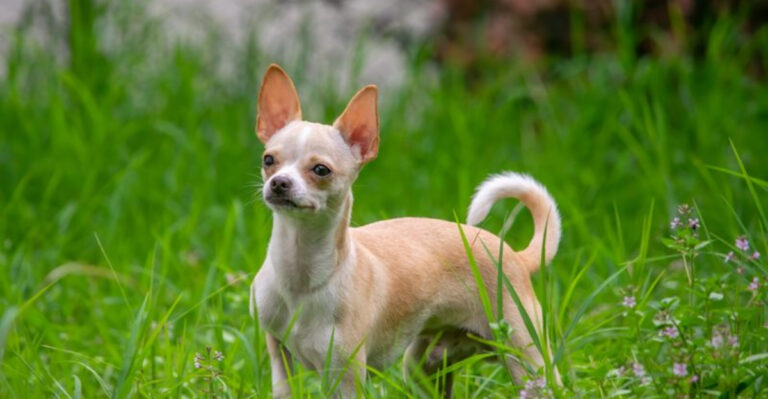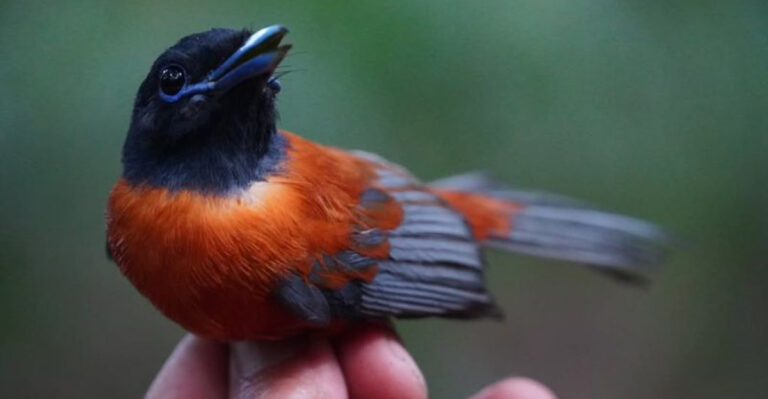14 Ways To Make Your Hummingbird Garden Stand Out
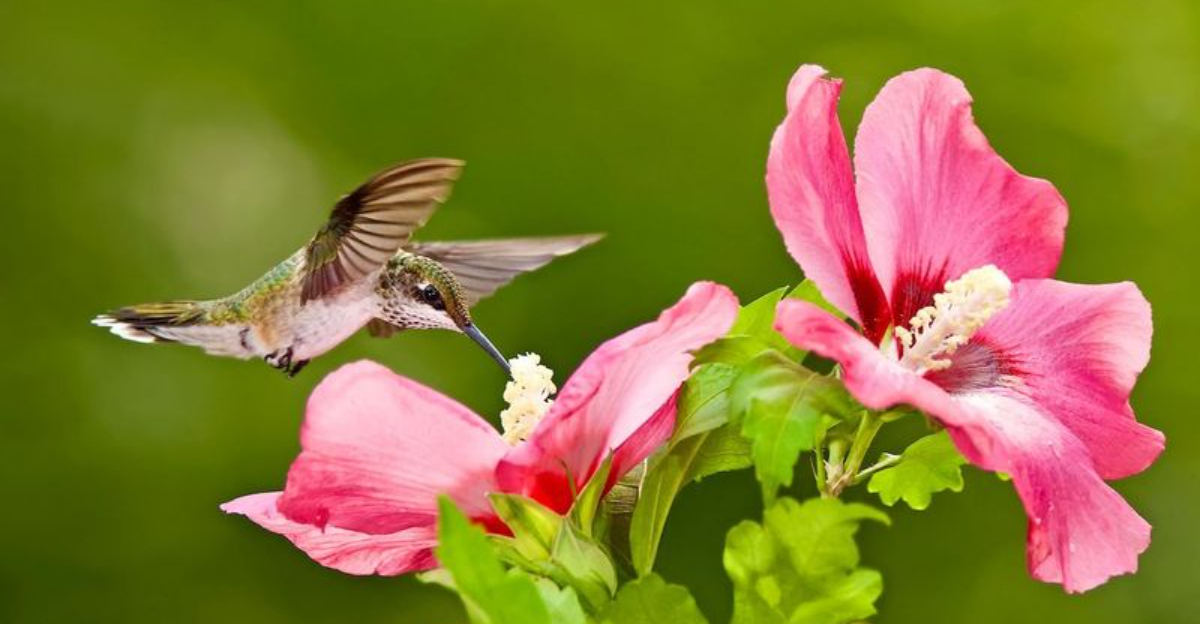
Hummingbirds bring magic to any garden with their iridescent feathers and lightning-fast wings. Creating a space that attracts these tiny aerial acrobats isn’t just rewarding – it’s easier than you might think!
Whether you have a sprawling backyard or a compact balcony, these tips will transform your outdoor space into a hummingbird haven that neighbors will envy.
1. Plant Trumpet-Shaped Flowers
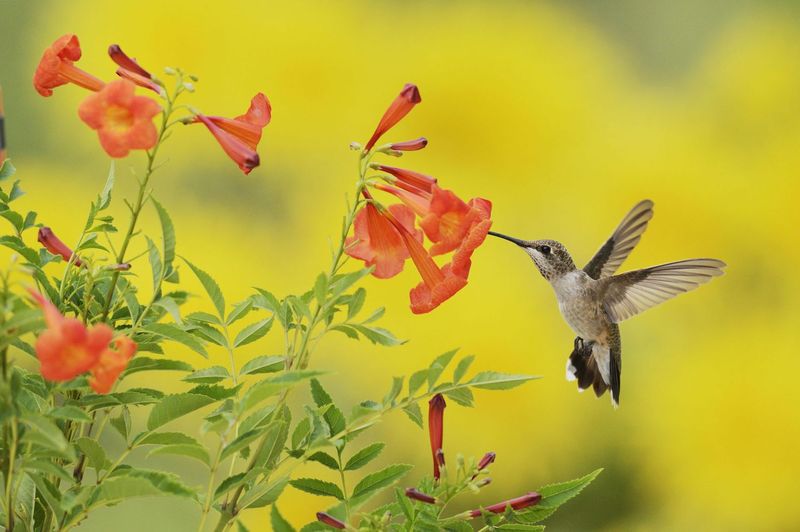
Hummingbirds absolutely adore flowers with long, tubular shapes that perfectly accommodate their specialized bills. Blooms like trumpet vine, cardinal flower, and bee balm act like natural feeding stations that these tiny birds can’t resist.
The bright colors – especially red – catch their attention from high above as they zip through your neighborhood. Native trumpet-shaped flowers are particularly effective since they’ve evolved alongside local hummingbird species.
For continuous visitors, stagger planting times so different flowers bloom throughout the season. This ensures your garden remains a reliable food source from spring through fall.
2. Create A Tiered Garden Design

Vertical variety makes your garden irresistible to hummingbirds who naturally feed at different heights. Arrange tall flowering trees at the back, medium shrubs in the middle, and low-growing blooms in front to create a multi-level feeding paradise.
This strategic layout mimics natural habitats where hummingbirds dart between forest canopies and ground-level flowers. The tiered approach also maximizes your planting space, allowing more nectar sources in limited areas.
As an added bonus, your garden gains visual interest with this dimensional design. Visitors will marvel at hummingbirds performing aerial acrobatics as they navigate between the various levels.
3. Install Multiple Feeders
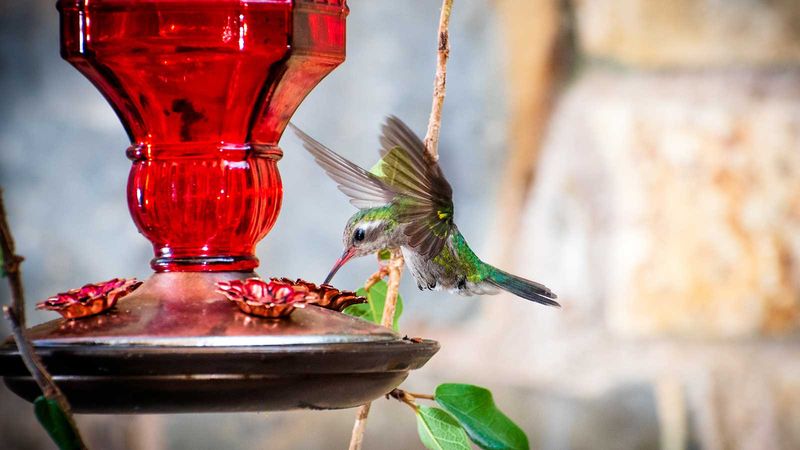
Hummingbirds can be surprisingly territorial despite their tiny size! Placing several feeders throughout your garden prevents bullying and ensures everyone gets a meal. Hang them at varying heights and locations about 10-15 feet apart.
Red feeders work wonderfully since hummingbirds are naturally drawn to this color. Make your own nectar by mixing one part white sugar with four parts water – no food coloring needed! The simple solution most closely mimics natural flower nectar.
Clean feeders weekly with hot water to prevent mold growth that can harm these delicate birds. During peak migration seasons, you might need to refill them daily as word spreads about your garden oasis!
4. Add A Misting Water Feature
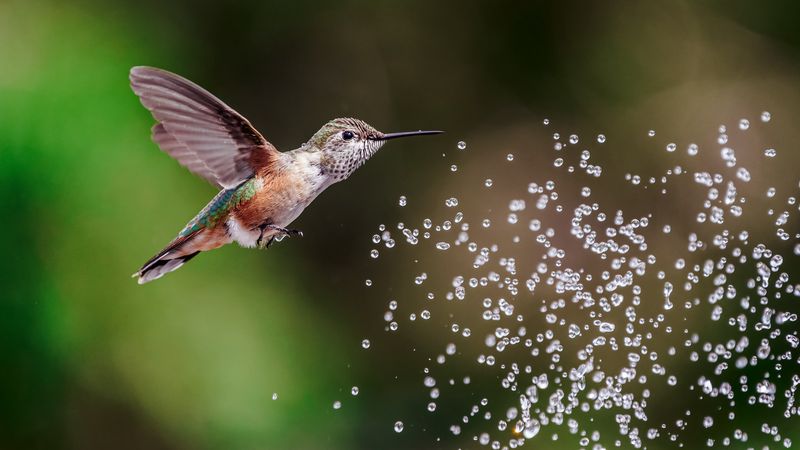
Few garden sights compare to hummingbirds darting through fine water droplets on a hot day! These tiny birds adore flying through gentle mists to bathe their feathers. A simple misting system attached to your garden hose creates this refreshing feature.
Beyond bathing, the water droplets attract tiny insects – an important protein source for hummingbirds. Set your mister to operate during morning hours when hummingbirds are most active.
Position the mister near flowering plants so birds can feed and bathe in one convenient location. This dual-purpose station becomes an irresistible attraction that will keep hummingbirds returning to your garden throughout the season.
5. Incorporate Perching Spots
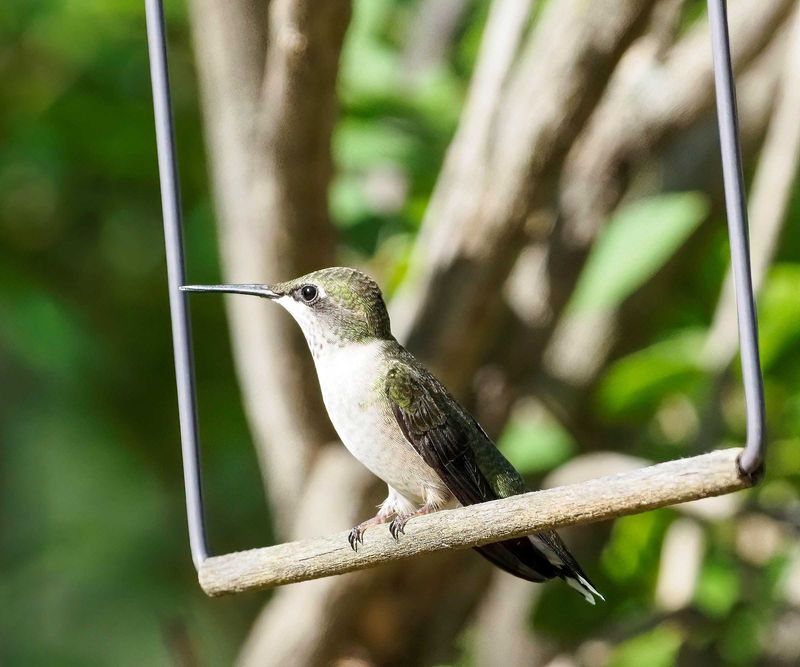
Contrary to popular belief, hummingbirds spend about 80% of their time perching! These energetic flyers need rest stops between feeding sessions. Thin bare branches, decorative garden stakes, or even clotheslines provide perfect landing spots.
Position these perches near nectar sources but with clear sightlines so birds can survey their surroundings. Hummingbirds prefer perches with good visibility to watch for predators and rivals.
As an added touch, place perches where you can easily observe them from your favorite window or garden seat. You’ll witness fascinating behaviors like preening, stretching, and even their adorable tiny yawns that most garden visitors never get to see!
6. Plant In Masses Of Color
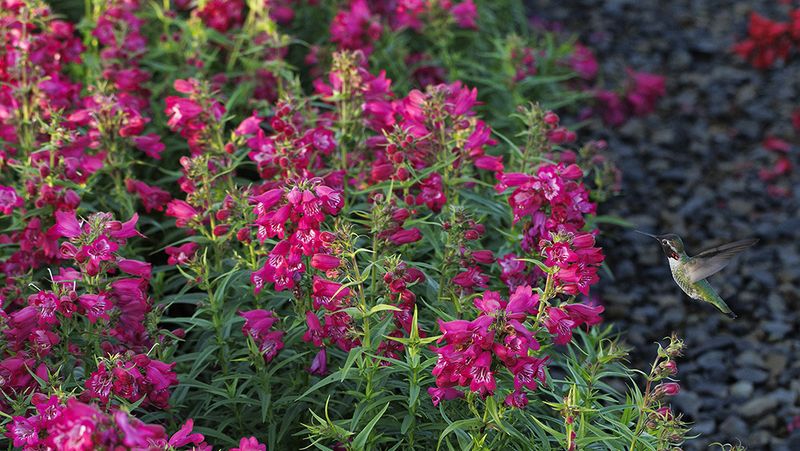
Hummingbirds spot their favorite flowers from remarkable distances thanks to concentrated color blocks. Group identical plants together instead of scattering singles throughout your garden. Think clusters of at least 3-5 plants of the same variety.
Red, orange, and pink blooms create irresistible visual magnets that signal abundant nectar sources. These aerial scouts remember reliable feeding locations and return regularly once they’ve discovered your colorful bounty.
Beyond attracting hummingbirds, these vibrant groupings create stunning visual impact in your landscape design. The dramatic color blocks transform an ordinary garden into an extraordinary display that stands out from neighboring yards.
7. Extend Blooming Seasons
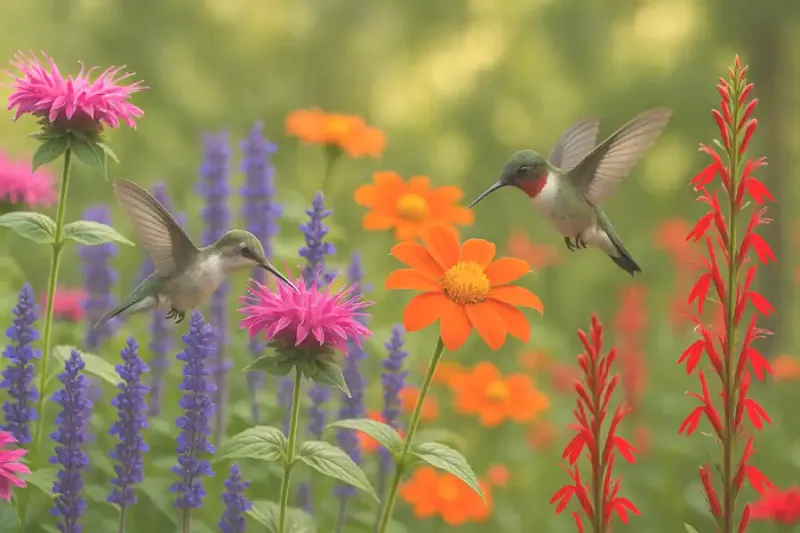
Smart gardeners know the secret to constant hummingbird visitors: uninterrupted nectar sources from spring through fall. Research native plants with different blooming times and incorporate early bloomers like columbine, summer stunners like bee balm, and fall favorites like sage.
This thoughtful planning ensures hungry hummingbirds always find food in your garden, especially during critical migration periods when energy demands soar. Keep a gardening journal noting when different varieties bloom to identify and fill any gaps in your nectar calendar.
For early spring and late fall when natural blooms may be scarce, supplemental feeders become particularly important. Your garden will become a reliable waystation that hummingbirds remember and return to year after year.
8. Provide Nesting Materials

Female hummingbirds build extraordinary nests the size of half a walnut shell using spider silk, plant down, and lichen. Help these master architects by leaving natural materials available in your garden.
Cotton fluff, plant fibers, and small downy feathers can be placed in mesh bags or scattered near feeding areas. Some gardeners even hang short pieces of cotton string that hummingbirds will pull apart for nesting material.
Avoid synthetic fibers, human hair, or dryer lint which can stretch when wet and potentially harm nestlings. With the right materials available, you might witness the incredible sight of a hummingbird gathering supplies and potentially even discover their camouflaged nest in nearby trees!
9. Create Windbreaks For Protection
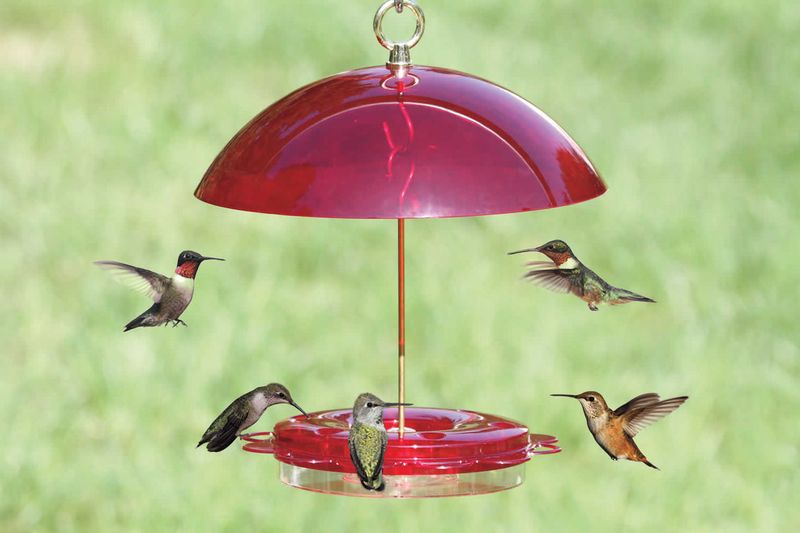
These tiny birds weigh less than a penny, making them vulnerable to strong winds that disrupt feeding and waste precious energy. Strategic placement of shrubs, trellises, or decorative screens creates calm feeding zones where hummingbirds can hover comfortably even on breezy days.
Position these windbreaks on the prevailing wind side of your garden. Dense evergreen shrubs work wonderfully as natural barriers while also providing potential nesting sites and perching spots.
The sheltered microclimate you create benefits delicate flowers too, keeping them intact longer as nectar sources. Your garden becomes a sanctuary where hummingbirds can feed efficiently regardless of weather conditions, giving you more opportunities to observe their fascinating behaviors.
10. Eliminate Pesticides
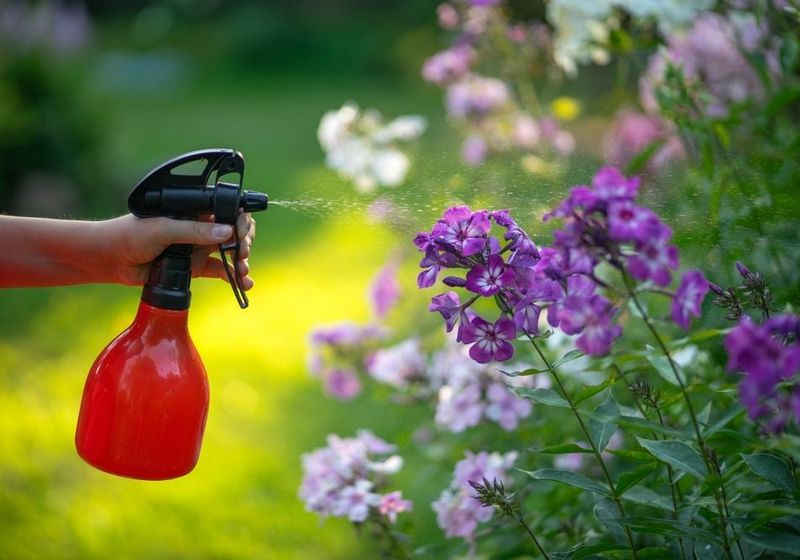
Chemicals that kill insects also harm the tiny birds that feed on them. Hummingbirds rely on small insects for protein, especially when feeding their young. Natural pest control methods like introducing beneficial insects keeps your garden healthy without dangerous residues.
Ladybugs, praying mantises, and lacewings naturally control aphids and other plant-damaging pests. Simple solutions like strong water sprays knock off unwanted insects without leaving harmful residues on flowers.
Your chemical-free garden becomes a safe haven for hummingbirds throughout their lifecycle. The bonus? You’ll enjoy a healthier ecosystem with natural checks and balances, more pollinators, and the satisfaction of supporting wildlife through sustainable gardening practices.
11. Hang Colorful Garden Art

Bright decorations act as initial attractants that draw curious hummingbirds into investigating your garden. Red or orange garden art, wind spinners, and sun catchers catch the light and hummingbirds’ attention from impressive distances.
These colorful elements serve as visual beacons until your flowers bloom fully. Place decorative items near feeders or flowering plants to guide birds toward actual food sources.
Beyond attracting hummingbirds, these artistic touches express your personality and add year-round visual interest. Choose weather-resistant pieces that maintain vibrant colors through sun exposure and rain. Visitors will appreciate both your artistic flair and the increased hummingbird activity these simple additions bring!
12. Create Hummingbird Flight Paths

Hummingbirds follow invisible highways through gardens, preferring clear flight corridors between feeding stations. Design your garden with strategic open spaces that create natural flyways connecting clusters of flowers and feeders.
These aerial pathways should be free from obstacles like hanging baskets or tall structures that interrupt direct flight. Observing where hummingbirds naturally travel helps identify their preferred routes.
Once established, these flight paths become fascinating observation zones where you can watch hummingbirds zoom back and forth at amazing speeds. Position garden benches or viewing windows along these corridors for front-row seats to the hummingbird highway show that few gardens offer!
13. Maintain Feeder Stations Year-Round
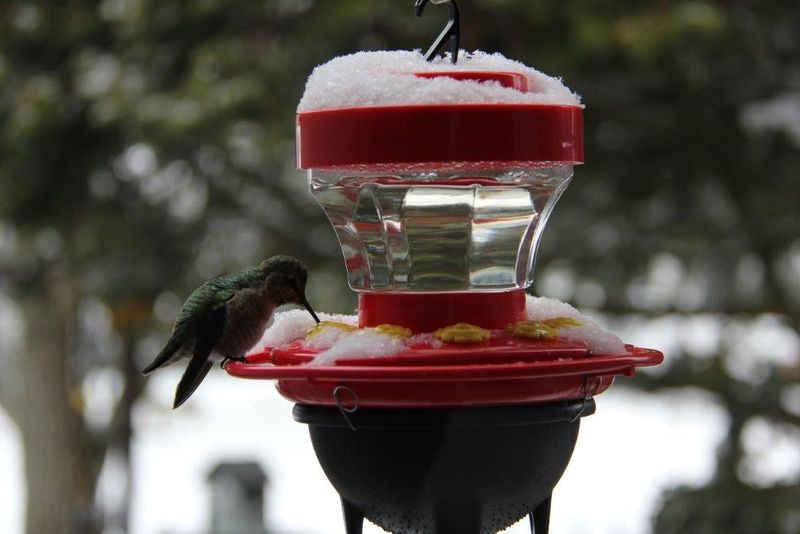
Many regions have overwintering hummingbird populations that rely on dedicated gardeners during scarce winter months. Keeping feeders available even in colder seasons provides crucial support for these surprising winter residents.
Special heated feeders prevent nectar from freezing in northern areas. Alternating two feeders allows for cleaning one while keeping the other available – ensuring hungry birds always find food.
Your consistent care might attract rare winter hummingbird species that birders travel miles to observe. Document unusual visitors with photos and consider participating in citizen science projects tracking hummingbird migrations. Your garden becomes not just a seasonal treat but a year-round lifeline for these remarkable birds.
14. Add Shallow Water Sources
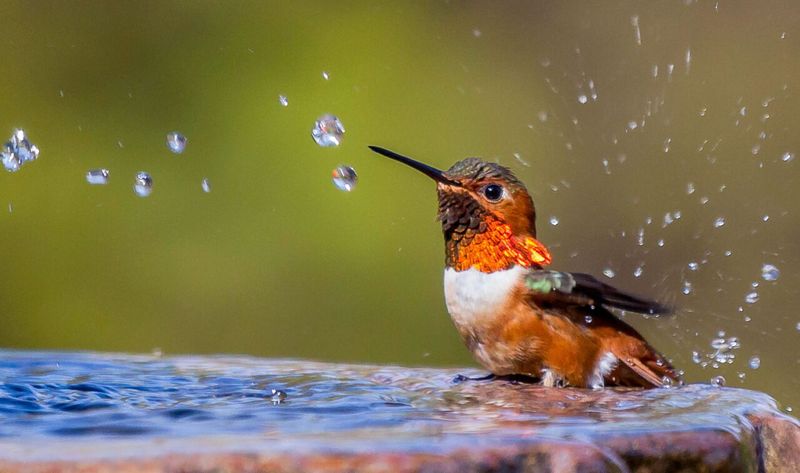
Hummingbirds take the most adorable baths, skimming their tiny bodies across water surfaces! Shallow bird baths with rough-textured bottoms provide secure footing for these miniature bathers who prefer water no deeper than half an inch.
Moving water particularly attracts them – consider adding a small solar fountain or bubbler to your bath. The gentle sound and movement catches their attention while preventing mosquito breeding.
Position water features near flowers but not directly under feeders where sugar water might drip in. Fresh, clean water serves multiple purposes: drinking, bathing, and cooling off on hot days. Few garden sights delight visitors more than witnessing a hummingbird’s enthusiastic splashing session in your thoughtfully designed bath!



